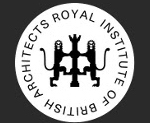What does the election result mean for architecture?
Currently, we’re in the middle of post-election carnage. But as Theresa May attempts to get her government plan in order, Shaun Soanes looks into what the election result could mean for creative industries.
Voters turned out in force on June 8th, but instead of being given the promised “strong and stable” government, our political situation has been plunged into uncertainty, with a weakened prime minister who has been using her time trying to shore up her position.
The Tories seem to now intend on forming a government with the support of Norther Ireland’s Democratic Unionist Party.
What next?
Since the election result, there has been a mixed reaction from the UK’s architects. Many people see this result as an opportunity to negotiate a better trade deal with the EU. Other people have concerns about the political uncertainty it will bring and whether this will have a bad effect on the economy – particularly on the construction industry.
It’s vital that all governments realise that investment in both housing and infrastructure should still be a priority. We are still struggling with the construction skills gap and the housing crisis is continuing.
Promises, promises
Everyone being ensured a safe place to sleep is a basic responsibility of the government. But numerous governments have continually failed to build enough houses and provide enough social housing – the UK is in the grip of a worsening housing crisis as a result.
In the middle of Theresa May’s campaign, she promised to “fix the broken housing market” by building “a new generation of social housing”. A plan was proposed to offer loans, funds and new powers to housing associations and councils to help them build a new generation of social housing for renters. She also pledged to give these new tenants the option to buy the property after 10 to 15 years.
The Liberal Democrats and Labour proposed to scrap the right to buy scheme completely, claiming that since Margaret Thatcher’s reign it had led to house price inflation, rental increases, widening the gulf between those who own their home and those who never will.
The main Conservative pledges relating to housing in the manifesto were:
- To provide 1 million homes in total between 2015 and 2020, and another 500,000 by 2022
- To introduce compulsory purchase reforms, making it easier to councils to buy up empty land
- To provide new social housing
- To cut rough sleeping by 50% by 2022 and “eliminate it altogether” by 2027
What about Brexit?
EU officials have casted doubt on the June 19th start date for negotiations, and substantial discussions are not expected to begin until the government is more secure. We have no idea how long that will take. People say the Conservative party’s loss of seats will significantly impact their ability to negotiate the “hard Brexit” it previously threatened – arguing that this is not such a bad thing. After all, the UK government may begin stricter immigration controls after Brexit, meaning it could create disasters for the creative industry.
The Creative Industries Federation published a new study claiming that limiting the number of workers entering the UK will cause a massive skills shortage for what it describes as “the fastest growing part of the British economy”.
The country’s architecture and design sector employs more than 1.5 million people, with more than 60% of them being non-EU workers. That’s 900,000 people.
Protect and preserve
The architecture and design communities need to lobby for their interests, including:
- Continued rights for EU workers in UK businesses
- Continued access to work in Europe
- Protection for existing staff
- Better delivery of affordable housing
- Higher investment in infrastructure
- Support for the future of our built environment
We will be watching with interest to see what happens next.


 Bentinck House
Bentinck House


